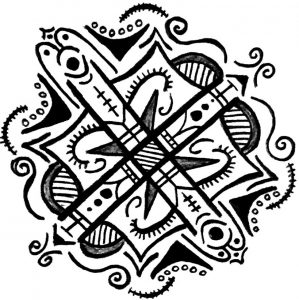For the architectural photography course we were assigned to analyse the work of an architectural photographer to contextualize, analyse formal qualities and interpret the ideas and meanings. I have studied on the works of Filip Dujardin.
Dujardin started his career as an art and architecture photographer and moved on to creating his own imaginary architecture by digital collage technique. More recently, he has developed installations that explore the boundaries between architecture and sculpture. On top of that, Dujardin creates a fascinating dialogue between 3D-installation and photography.
Besides his photography of documentation, he mostly in the side of translation of architectural knowledge which means interpretations of the photographer. He thinks that architectural photography gives the opportunity to interpret what is expected to be presented. Such as compression to show more or elimination to show less.
While analyzing his formal qualities such as arrangement within the frame, it is possible to see the aimed context: it adapts itself to the borders of the frame while creating tension. A common concern in his works is exploring new tensions by detecting new typologies in architecture and interpreting them. Also, he mostly uses frontal expressions of the objects to clearly capture and integrate the horizontal and vertical elements within the frame while experiencing them on different scales.
The main keys in his works are typological approach, tradition, compressing, fragments of reality, surrealism, manipulation, and fictions. He focuses on the ordinary types of objects such as columns, walls, chimneys, and observes how interpretations and manipulations can expand their genres. These observations have encouraged him to make a series of images that deal with notions of the architecture of re-realized reality, as a kind of fabricated reality. His fictional buildings evolved out of his frustration with not always having a dynamic-enough subject to make an interesting image. Since then, he is weaving the surreal into the urban language as Belgian cultural heritage, referencing surrealist artists such as René Magritte and Raoul Servais.
Fictions present impossible architecture in conceptual subjectivity created with digital collage techniques from photographs of existing buildings in and around Ghent. So this work deals with ways in which fragments of reality can be recorded and re-imagined in a series of whole as collages. Dujardin has created buildings that impossible to construct; sculptural formations which are occurred after criticizing and manipulating the ordinary typologies & traditions of the architecture. At his series of ‘Fiction’, there is a confusion that at first glance they seem ordinary but they reveal their absurdity upon closer inspection. Their attractiveness is that they look like impossible architecture but still in the range of plausibility. He called them ‘ancient monuments from the future’ because of the tension that they are high-tech but exteriors were added in low tech skin with industrial materials like concrete or brick. With his approach, he distances himself from today’s conventional methods of depicting real architecture like renderings. Dujardin appreciates the complete freedom and spontaneity he has during building in a virtual model.
In conclusion, it is possible to say that his works are a kind of evocative reconceptualization, rethinking, and re-fragmentation of the architecture that exists as a kind of image system. Compressions of the cultures, regions, traditions, history, memorials, and cityscapes.






















